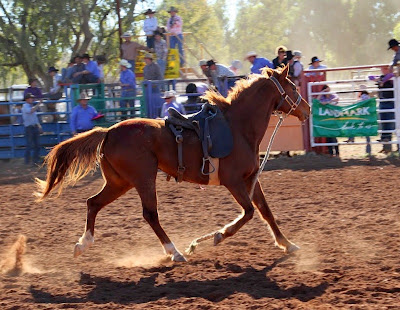"To love -
"
"To a lifetime
-"
"To memories of
happy days and happy nights - "
Claudio leaned back
in his chair and looked at his wife and sighed mistily.
"Six years ago
today, Marja, I carried you across the threshold of our first apartment -"
"After we'd
walked up five flights of stairs - "
"There was no
elevator and our apartment was on a narrow landing -"
"With only a
railing over the stairwell, and you had to be very careful not to tip me over
the edge as you picked me up and swung me around to get through the door!"
"And then"
Claudio smiled slyly, "I carried you inside for a night of wild nuptial bliss!"
Marja and Claudio
looked at each other fondly and held hands under the table. But they didn't meet my eyes. I narrowed mine,
and leaned forward.
"May I ask a
question?"
"Absolutely!" Claudio waved expansively, and poured
himself another glass of wine.
"DID you have
a
night of wild nuptial bliss?" I said. "I don't know of a single couple
who, in real life,
on their actual wedding night, actually did.
A wedding is mostly this huge, stressy, organized-to-the-walls THING, and even
if it isn't stressy or messy, the party afterwards is generally pretty
epic, and
by the time you've escaped from the guests and gotten back to your room,
any
reasonable person just wants to go to SLEEP.
I reckon that there isn't actually a
single wedded couple - at least, any a couple that isn't required to
produce proof of consummation in the morning, or isn't 18 and invincibly
horny - who DOES consummate
their marriage on their wedding night!" I sat back and took
a deep breath. "There." I said.
"A speech."
Marja and Claudio
looked at each other. They looked at me.
"To answer your
question," Claudio said slowly, "We did NOT.
To be honest, I didn't even carry her very far over the threshold."
"About three
steps." Marja giggled.
"Then he fell over. It was two o'clock in the morning when we got upstairs, and it had been a LONG day!"
"First I picked
her up at her parents house - at noon -"
"And then we
went to the courthouse -"
"And then the
church -"
"And then we
had a party -"
"A REALLY good party- "
"And after
THAT, lifting her up to carry her across the threshold almost floored me. We
sort of OOOZED across, with her feet about an inch above the floor -"
"And then we
went to sleep." Marja grinned. "But the day afterward - THAT was
another story."
Mr Tabubil
and I
were married at ten o'clock in the morning, barefoot, on a beach. We were married
out of a small hotel in Titikaveka on the Island of Rarotonga, and
after the ceremony, we and our few beloved guests repaired to the
hotel's little restaurant for a truly EPIC wedding breakfast. The
weather was tropical hot and tropical sticky, and when the party
floated
to a finish, Mr Tabubil and I, drowning in our splendid wedding togs, dribbled upstairs to our room, throwing
promises behind us to see everyone again on the beach, in an hour -
just enough time for a shower and a change of clothes and the briefest of
restorative shut-eyes- that's all -
In our room we
barely had the strength to close the door and slip off the dress and the suit
before we fell face-down on the bed and fell asleep, his hand on mine, clasped together
over our fine new rings.
We woke up three hours later to the sound of laughter
and splashing below our window. We
slipped into swimsuits and went down to join our guests and only came out of the
water when the sky had turned red and the sun was setting over the reef.
Upstairs again, we
discovered that while we were down in the water, the housekeeper of the hotel
had crept up into our room and laid out a wedding tableaux. Two cane chairs had been dragged over to the
window and turned so that they faced the
sea. A small table had been placed laid
between them, and laid with my wedding flowers, a candle and a box of matches and
a bottle of champagne. Over the back of
the chair she had draped a brand new pareo, in the same shades of blue and
purple as the water outside. The bed had
been turned down for sleep, and as a final touch, the housekeeper had gone into
the closet and found a lacy little bit of nothing that I had brought with me in
my suitcase, and she had smoothed it flat and laid it out across my pillow.
It was perfect.
But this wasn't an
evening for romance. We were new-married
in paradise, but we were also in the middle of a one-week window where we had
the north American friends that we loved best in the same place as ourselves, so we dried ourselves off and
walked across the road to a little cottage where our Canadian friends were staying, and a rather splendid after-party
burst into the black tropical night like a catherine wheel.
We crept home again
at three in the morning, and slipped into bed and fell straight asleep.
When we woke the sun
was high in the sky, and looking around the room at the untouched wedding
tableaux, we felt a terrible remorse. The housekeeper had spent such time and shown
such kindness setting up the perfect nuptial night, and there we were, the
unspoken wedding cliché, and all her efforts wasted.
So we stepped into
the breach.
Mr Tabubil dragged
the chairs around to face each other and lit the candle to blacken the wick and blew it out again, and dropped the spent match on the table. I wadded the freshly pressed pareo into a
ball to crease it, and pulled it straight again, and dragged it across the
floor half-way to the bed and left it there.
While Mr Tabubil twisted our bedsheets and pillows into a perfect storm of
acrobatic disarray, I took the lacy bit of nothing and wadded it up and
shoved it underneath one of the pillows - and considered it, and took it by the
corner and dragged it out again and left it hanging artistically half-way down
to the floor.
We looked at the
chaos and smiled. We'd said
thank you. In the best possible way -
with a tableaux to match her own.
And Mr Tabubil took
my hand and we went down to breakfast.
Happy anniversary,
Mr Tabubil. It's been three wonderful years. Here's to another three, to match Marja and
Claudio's six, and three more after that and three score times three -
Here's to happy days
and happy nights -
To love and to a
lifetime.





























